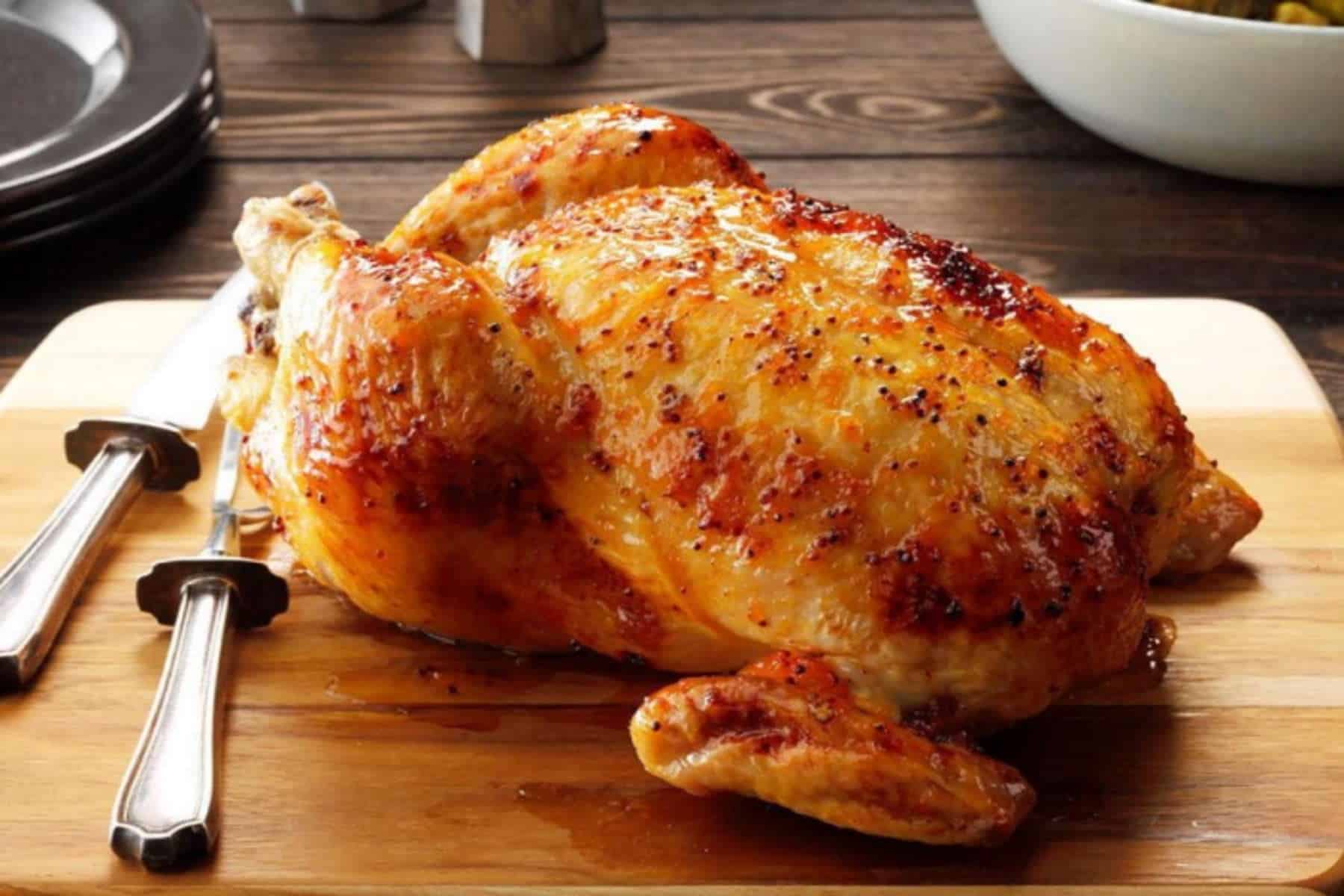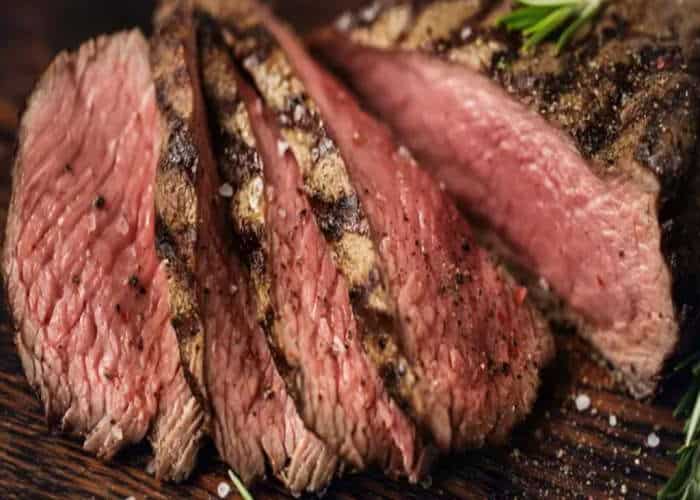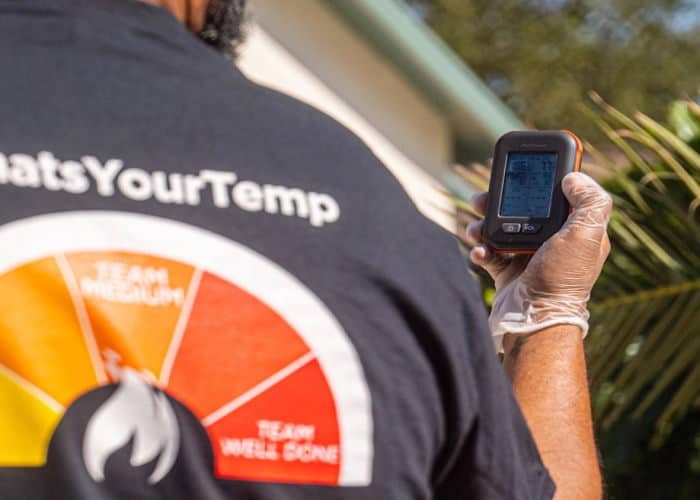
Understanding the Importance of Temperature in Cooking
Cooking is more than just an art. There is a science behind it as well. In particular, one of the first rules you will learn about cooking is the importance of temperature. It is more than just a matter of taste because temperature also concerns food safety. Take time to learn about knowing the right temperature when cooking so you can get the best results every single time.
Table of Contents
The Importance of Temperature
 A lot of effort goes into food safety in terms of handling and storing certain types of food. This is an essential step in making sure that the food is safe to consume. But aside from proper storage, you need to understand getting the right temperature when cooking. It is an important step to achieve the superior taste and to prevent spoilage.
A lot of effort goes into food safety in terms of handling and storing certain types of food. This is an essential step in making sure that the food is safe to consume. But aside from proper storage, you need to understand getting the right temperature when cooking. It is an important step to achieve the superior taste and to prevent spoilage.
The general guideline to consider when it comes to the temperature of food is this: hot food must be kept hot and cold food must be kept cold. There are various temperature zones that are referred to in cooking, as well as food handling and storage, which you can refer to. Obviously, you want to avoid food entering what is considered the danger zone.
Temperature control is first and foremost designed to make sure that the food is cooked properly. You cannot judge it based on how the food looks; you should always check the internal temperature. This is a must when cooking meat. Getting the meat to achieve a certain level of temperature will make sure that certain bacteria are killed off and that it is safe for humans to consume.
Guide to Cooking and Storing Temperature
Now that you have a general idea on the importance of temperature in cooking, it’s time to delve deeper into what temperature levels are most appropriate for certain situations. Not all types of food are the same. Some will require a lower temperature to cook while others need a higher temperature range.
The danger zone in cooking is anywhere from 40 to 140 degrees F. Within this temperature range, bacteria can multiply in as short a time as 20 minutes. This is why it is not recommended that you keep food items at room temperature for over two hours, especially if the room temperature sits at 90 degrees F (at which point, food should not be left out for an hour).
When you cook raw meat or poultry, you need to check the internal temperature of the meat as you cook it. The recommended internal temperature will differ from one meat to another. Therefore, you should always check to make sure the meat is done. Most meats and poultry need to reach at least 325 degrees F to be safely cooked. It is best to invest in a meat thermometer so you can keep track of the meat’s internal temperature.
The safest cooking temperature for most types of meat is 145 degrees F, but some will require up to 160 degrees F. This will vary according to how you like your meat – medium rare or well done. That is a matter of preference, but the minimum temperature recommendation should always be met for safety reasons.
Even when meat or other food items are cooked, it is still not safe from possible contaminants. You need to know the proper way to store and handle food to ensure that it is safe to consume upon reheating.
When food is stored at 0 degrees F in the freezer, then it is safe to consume upon reheating. The cold temperature slows the molecules and prevents bacteria from spreading. Once you thaw the food, it causes bacteria to accelerate. Make sure you follow proper thawing techniques even for frozen food items, just as you would perishable food.
Some people are surprised to know that bacteria can be reintroduced to your food even when you had cooked it previously within the minimum internal temperature. But you need to observe proper handling of food upon storing. Use shallow containers to facilitate faster cooling, or refrigerate your food immediately.
When reheating leftovers, heat it thoroughly until it is steaming or it reaches an internal temperature of 165 degrees F. If you are using a microwave oven, keeps your food covered and rotate it for even heating. If you are buying packed items, always check the recommended reheating time to ensure that the food is cooked all the way through.
Food that is not reheated properly – even when it has been cooked already – can still be a carrier of bacteria. By achieving the ideal temperature when reheating, you can ensure that it is free from foodborne illnesses.

Cooking Temperature Chart
As mentioned earlier, there are different cooking temperatures needed for the different types of meats. You can use this chart as a reference when cooking to ensure the food is properly cooked and safe to consume.
- Ground meat – 160 degree F
- Fresh, raw meat – 160 degrees F (medium) or 170 degrees F (well done)
- Poultry and game meat – 165 degrees F
- Fish and seafood – 145 degrees F
- Raw ham – 160 degrees F
- Cooked ham – 145 degrees F
- Rabbit – 160 degrees F
The above temperature guide is for the internal temperature of the meat. Obviously, the exterior of the meat will heat up first, so you cannot determine if the food is cooked based solely on the appearance of the meat from the outside.
What Are the Three Most Common Types of Thermometers?
There are three main types of meat thermometers on the market today: Digital instant-read, dial, and Thermocouples. These thermometers are differentiated by how quickly and accurately they read a temperature, and where the temperature gauge sits in the stem.
Dial thermometers are the oldest version of meat thermometers, the slowest and least accurate. The stem is usually thick and needs to be inserted up to two inches into the meat so the temperature sensor can take an accurate reading. They also can take a minute or two to get an accurate reading.
Digital Instant-Read thermometers usually have a slender stem with the temperature sensor only a ½ inch past the tip of the probe. They have a much faster response time than dials, but still can be slow to reach an accurate temperature.
Thermocouples are the gold standard of fast, accurate and dependable temperature readings. The temperature sensor is located at the tip of a very narrow stem, reducing damage done to the meat by checking its temperature and allowing you full control of where you are getting your reading. They are also fast, near instantaneous, and certain probes (like the ChefsTemp Quad Xpro) can be left in during cooking.
Where Is the Sensor on A Meat Thermometer Probe Stem?
Each of the ChefsTemp probe thermometers have a small thermocouple built into the narrow tip of the probe shaft. The thermocouple combines two wires made of different heat sensitive metals that produce a voltage that relates to a temperature change. This allows each ChefsTemp meat thermometer to be incredibly fast, accurate, and dependable.
What is the stem of a meat thermometer made of?
Our digital meat thermometer probes are made from high quality stainless steel with a high-performance Type K Thermocouple (made from Nickel-Chromium/Nickel-Alumel) for an incredibly fast and accurate read of the temperature of your food, with a wide temperature operating range.
Bottom Line
Understanding the importance of temperature in cooking is one of the basic elements you must know when learning how to cook. It is easy to get caught up in the taste and quality, but food safety must be of the highest priority. If you are not sure about the right temperature for cooking certain types of meat, you can always do your research. You can also check the chart above as your guide to make sure that the food is cooked properly.
4 Comments
Comments are closed.
Discover Other ChefsTemp Products
Discover more recipes and learn kitchen tricks by joining our cooking family on Facebook.
You may also like:
















[…] degrees in a convection oven” is actually pretty simple. When using a convection oven, the temperature is measured in Fahrenheit. So if you want to know what temperature 350°F is in a convection oven, […]
[…] time depending on the type of pork ribs in question and the temperature. With the cruciality of temperature in cooking, you need to be sure you are cooking at the best […]
[…] using an electric smoker on chicken is not as easy as it seems. You need to achieve the right cooking temperature and internal temperature on the chicken for it to stay flavorful without being too […]
[…] to make sure that is possible. For example, you need to cook certain types of meat within the recommended cooking time to ensure […]